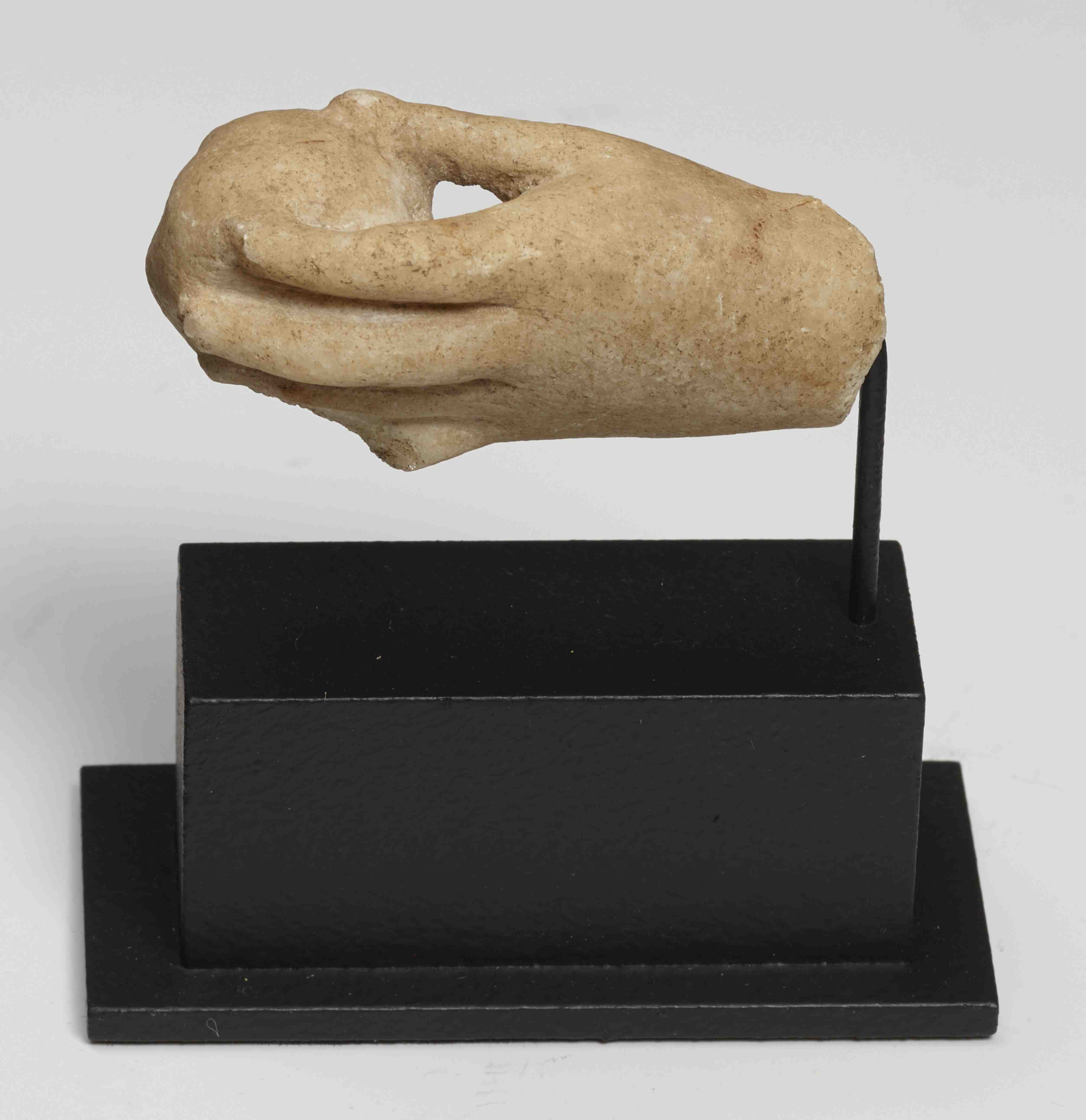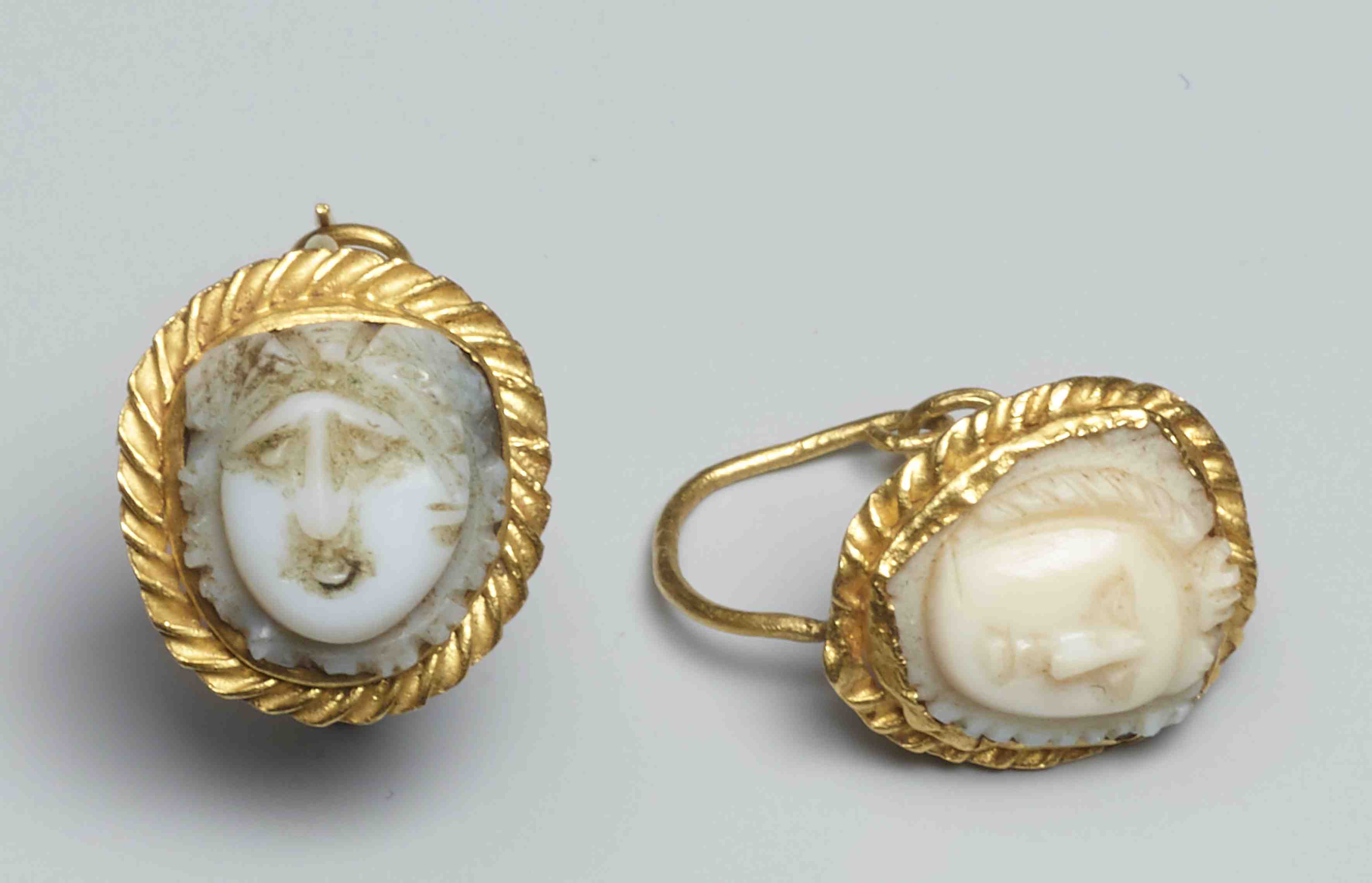This masterfully sculpted head of a satyr belongs to a group known for its numerous copies, now preserved in museums and private collections all over the world. The head, as is typical for a depiction of a satyr, is turned slightly to the left, with a youthful countenance. The chubby-cheeked face bears a large, childishly mischievous smile, with the teeth of his open mouth visible. The corners of his mouth are deeply drawn-in and his skin is taut over his cheekbones. His hair is thick, flowing and curly, and radiates from the crown, framing his face in waves which are swept up above the forehead, and are bound in a band adorned with berries. His pointed, billy-goat ears have been meticulously concealed behind his wavy hair, but remain partially visible. The satyr has a broad forehead with slightly asymmetrical, narrowly-spaced, blank eyes, clearly delineated eyebrows, a snub nose and a rounded chin.
Note
This type of the head is most likely based on a Greek original of the 3rd-2nd century BC, the so-called Invitation to the Dance, renowned from the reverse of a coin minted in the city of Cyzicus during the reign of Septimius Severus, as well as from many Roman copies and adaptations. The group depicts a young satyr, dancing ecstatically and beating the rhythm of the music with a foot-clapper (kroupezion) and/or snapping fingers in front of a seated, half-clad nymph shoeing her sandal before accepting the invitation.
The supposed circumstances in which certain satyr and nymph fragments belonging to this group were discovered led to the false conclusion that the marbles were distinct sculptures by two different artists. However, the discovery of a dancing satyr’s torso next to the torso of a seated nymph at the Nymphaeum of Laecanius Bassus in Ephesos proves unequivocally that the two figures were originally a pair. The sculptor of this group has captured the moment directly before the beginning of the dance, when the tension as to whether she will accept the invitation is at its highest.
Judging by the various known replicas, the Invitation to the dance was undoubtedly a well-known and significant sculptural masterpiece in Antiquity. The satyr head shown here is, in terms of quality, one of the most well-preserved and most complete copies known to date.










